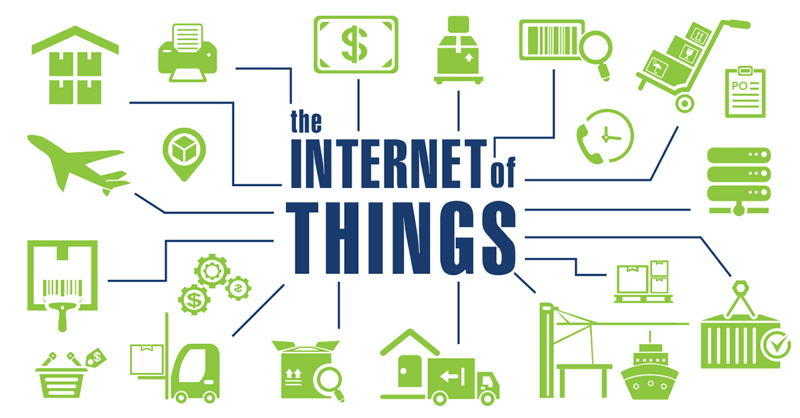SaaS parcel shipping solutions used to be only for small shippers. Not anymore. The IoT connects shipping apps to local data sources, scales, thermal label printers, and other material handling devices.
Here is a real scenario. In the south of England, a large swarm of robots occupy a three-story grocery fulfillment center managing 50,000 products in three temperature regimes, each fulfilling customer orders, communicating over wireless networks. Welcome to the world of the Internet of Things (IoT).
The delivery vans are outfitted with IoT sensors that log relevant data during deliveries such as location, wheel speed, engine revs, braking, fuel consumption, and cornering speed. That data is then sent to routing software to improve the algorithm to continuously improve delivery routes, taking into account vehicle capacities, weights, volumes, fuel consumption, and a few other things.
This scenario is from an online-only grocery chain. It was one of the first of its kind, and a pioneer in deploying IoT technology, all while mapping some seriously rough and uncharted logistic seas.
Sound complicated? Fantastically so.
And that’s a bet not all large organizations can afford to make. The capital needed, both financial and human, to create advanced technology from scratch to solve business problems is substantial. The good news is that the IoT is now moving out of the hype curve into the realm of more widespread adoption.
Without IoT, SaaS Shipping Solutions Have Limited Automation Prospects
It used to be that cloud-based parcel TMS systems were limited to small shippers, typically less than 50 packages/day, because of the inability to securely integrate in real time with local data sources and devices. This included the majority of carrier-provided web-based systems that lacked integration with local scales, requiring manual entry of weights. Labels were created on laser printers that lacked the speed provided by thermal label printers. Data integration required batch uploading and downloading.
While some SaaS solutions offered browser plug-ins and controls like ActiveX to integrate with devices, IT administrators became concerned with security issues introduced by these components and also the cost of managing browser versioning and control.
Thanks to the evolution of the IoT, that has changed, allowing larger organizations to automate high-volume shipping across their enterprise using cloud-based solutions — all without having to assume the risks associated with “early adoption” of hype curve technology.
How has the IoT improved SaaS?
Glad you asked.
Order Data Integration: To automate shipment processing, SaaS shipping solutions need access to order header and line item information. If that data is stored in an on-premise WMS, OMS, or ERP system, an IoT connector can access it from the cloud in real time, process the package, and then return charges and tracking information to automate shipment confirmation.
Device Integration: As mentioned above, most SaaS solutions do not integrate with devices such as scales, scanners, dimensioning scales, cameras, and thermal label printers. This means users have to manually enter weight and other data, and are also limited to printers supported by a work station’s operating system — not ideal for high volume throughput. IoT connectors enable these devices for SaaS solutions. The IoT solves that problem by creating secure channels to local agents whose job it is to communicate with devices.
Widget Integration: Businesses that want to provide customers with self-service package tracking and returns capabilities within their websites have to develop programs to integrate with APIs. In the same way IoT agents can be used to connect with devices, they can also be used to exchange data with plug-in “widgets” within their web page, exchanging data in real time with local data sources and devices, without the security issues associated with browser plug-ins.
“The IoT has made parcel shipping system deployments a reality for medium to large to global enterprises who want to avoid on-premise implementations,” notes Bob Malley, Managing Director, Pierbridge. For businesses shipping thousands of parcels and LTL transactions every day across hundreds of locations, the future is already here — and they don’t need Mariana Trench-deep pockets to stay connected. Pierbridge’s innovative HubCapp technology offers all of the above capabilities that help developers accelerate their adoption of Transtream’s multi-carrier API.
(Also, before we sign off for this week, check out this company that has developed highly accurate GPS tracking that not only records the temperature and humidity experienced by a parcel, but also if it’s been dropped, and, yup, when it’s been opened.)
